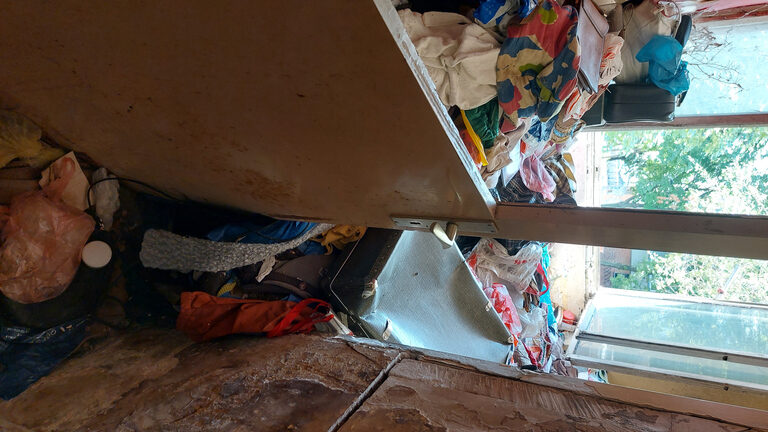
We’ve all seen pictures of hoarded homes. Whether it was on television or Instagram it was not a pretty picture. Almost all the pictures any of us see on our electronics are dark and unpleasant – so unpleasant they make us want to look away. Imagine how it feels both to the person doing the hoarding and to those who live with them. My goal in this post is to provide compassionate solutions for hoarding and to help everyone involved move past overwhelm.
Introduction: Understanding the Challenge
Most people who hoard have never been officially diagnosed with a hoarding disorder. That’s why it’s difficult to know how many people are challenged by this disorder. The best guess is that between 2 and 5% of the population have this disorder. The official diagnosis in the Diagnostic and Statistical Manual version 5 (DSM5) is this in brief:
- Difficulty discarding things that others may view as useless or of limited value
- The clutter prevents or limits the use of living spaces as they were intended
- The clutter or acquiring causes significant impairment or distress
People who hoard are typically very embarrassed by the state of their home. They are generally reluctant to have anyone over which limits their social interactions to those which occur elsewhere.
They may think about decluttering or tell family members they intend to do something about it and then have trouble putting those good intentions into action. It’s overwhelming. That feeling of being overwhelmed and not knowing where to start can be paralyzing. The person may think to themselves that it’s too much and give up before they even start.
Why It Feels Overwhelming
Imagine for a minute, that your parents died – one and then the other. You had to empty their home. Some things were easy to donate or to give to other family members and the remainder you brought to your house.
In the interest of time, you stashed things here and there without giving much thought to integrating these things into your home. All your life, your parents had impressed upon you the value of their good dishes and the antique furniture. You can picture your father sitting in that easy chair or your mother hand washing the dinner plates.
When it comes time to parting with some of these things you decide you have other things you’d prefer to do. So, you don’t do anything. More time goes on, more things collect, and it’s even harder to let these things go.
Your emotions get in the way first and then you can hear in the deep recesses of your memory that these things are valuable. You can’t just turn them over to GoodWill. It’s important to you that all these things are properly sold or at the very least given to someone who will use them. The result is that your home is filled up and you don’t know what to do about it.
This is just one possible scenario.
Knowing what to do with all the stuff is a huge part of what keeps a person stuck.
Empathy and Understanding: The First Steps to Helping
If you know someone who is hoarding, and you want to offer help it’s important to approach someone without judgment or pressure. The temptation for someone who isn’t challenged by these tendencies or behaviors is to say, ‘just get rid of it’. If you do that, you will be shown out of the house and will not be invited back.
Keep your mouth closed, your quick-fix suggestions to yourself, and listen to the person’s concerns. You (and they) know that the home did not fill up overnight, and it will not be decluttered, cleaned, and organized quickly.
To offer compassionate solutions for hoarding, you must come into this working relationship completely judgment free.
Practical Ways to Help
- Start Small:
Begin with a small area. It may be the first three feet of floor inside the front door. Or maybe clear the clutter from a tabletop.
Be specific with the goal.
- Set Achievable Goals:
Work for an agreed upon amount of time. I suggest 20 – 30 minutes at first. Then take a break and assess the progress.
Celebrate every small win to build momentum.
- Provide Emotional Support:
The person may be more comfortable working if you are there to provide company and encouragement during the process.
This can be particularly helpful if they come across something that tugs at their heartstrings. You will be there to listen to the stories. Ask them to take a picture of the item and then if they want to either write down or record the story so they have it forever.
- Create a Maintenance Plan:
Once an area is decluttered, talk about ways to maintain the space. Help the person create a daily routine which incorporates maintenance.
Suggest they begin to build better habits to keep the progress moving forward.
When Professional Help is Needed
You may be doing all the “right things”, offering compassionate solutions for hoarding, being non-judgmental, providing companionship and hands-on help, and still not able to help the person reduce their hoard. This is frustrating and creates unpleasantness between friends, relatives, and life-partners.
If this is the case, please suggest the person contact a therapist trained to address the Hoarding Disorder. Also, ask if the person will work with a trained professional organizer.
The best results come from working with a therapist in addition to a trained professional organizer. The person receives therapeutic help in an office setting, hands-on help with a professional organizer, as well as suggestions of things they can do on their own.
Conclusion: A Journey of Patience and Support
Overcoming the overwhelm in a hoarded home is a journey. It’s challenging and can be very rewarding. The rewards come when the person challenged by hoarding maintains the first clear space for a week and then adds to it. That is a celebratory moment.
You, as someone offering compassionate solutions for hoarding, also receive a reward when the person you want to help lets you in. That is a huge gift of trust and one not to be taken lightly.
Change is possible. It starts with one small space and can extend through an entire house – a little bit at a time.
As a professional organizer with a Hoarding Specialist Certificate, I would be honored to talk with you if you would like to know more about helping someone overwhelmed by hoarding. You can schedule a free 30-minute phone consultation by sending an email to me: dnqsolutions@gmail.com.
Diane N. Quintana is the owner of DNQ Solutions, LLC. She is an ADHD Organizing Specialist, a Hoarding Specialist, and a Chronic Disorganization Specialist. Diane is also an ICD Master Trainer, Certified Professional Organizer in Chronic Disorganization, Certified Professional Organizer and co-owner of Release Repurpose Reorganize LLC based in Atlanta, Georgia. She specializes in residential and home-office organizing.
,


You hit the perfect note (which does not surprise me, given your expertise) when you spoke of empathy and being non-judgmental. It is too easy a trap for the lay person (and even the professional, sometimes) to fall into seeing the practical solution and eliding over the emotions of the person with hoarding tendencies. It’s easy to come into such a space, see the obstacles, and leap forward to the solution with out understanding that those obstacles are connected to complex emotions for the person keeping those items. We may not understand, but we have to respect that emotions must be managed before any progress can be made, or it may cause irreparable damage and distrust.
I am continually impressed by the warmth and patience you exude, Diane, when you write about working with people with hoarding disorders. I know I have a lifelong struggle with patience, so I admire you displaying it so effortlessly, and you’re a wonderful role model for loved ones and professionals alike.
Thank you very much, Julie. This is what I hope to convey and I’m thankful you see it.
What are your thoughts about the team approach for hoarding situations? How can building a team of support including a therapist, organizer, family or friends, cleaners, and more help the client make progress?
Thank you for sensitively sharing about this topic. I often wonder about the statistics as you mentioned. Since so many individuals with hoarding behavior don’t reach out for help, so they probably aren’t included in the estimates.
It’s wonderful you are able to work with and make a difference in the lives of those affected by hoarding.
Thank you for asking, Linda. A team approach of a therapist, organizer, family and friends works well. In my experience people with a hoarding disorder don’t like lots of people touching their things and so prefer not to have people out of their range of sight moving and touching things without their express permission. For this reason, I work one-on-one with my clients and only touch things when they let me know it’s OK.
Such a great reminder that being judgmental only harms the situation and never fixes it. Working with someone with a hoarding disorder is a very slow process and can be stressful to the client. It’s so important to celebrate all wins no matter how small.
Thank you, Jonda
Great advice for Hoarding individuals and their families, Diane. This is not my area of expertise, but it is so important to understand where they can start. Thanks for sharing.
Thank you, Sabrina
This is such an important topic because people are suffering in shame and isolation. Love and compassion, without judgment, are the keys. I love everything you put laid out here, especially how you suggest something as simple as starting with the first three feet of floor inside the door.
When it comes to people who struggle with hoarding, I think safety and management are important words. The idea that someone is going to come in an “clear it all out” is scary and unsettling. It’s also not a solution.
Small, consistent progress is helpful for building confidence and reducing anxiety about letting go.
Keep on sharing the wisdom, Diane!
Thank you, Seana. Yes, the idea of just getting rid of it all is terrifying. All of use professional organizers know that small, measured steps are the best to take when you want to make progress.